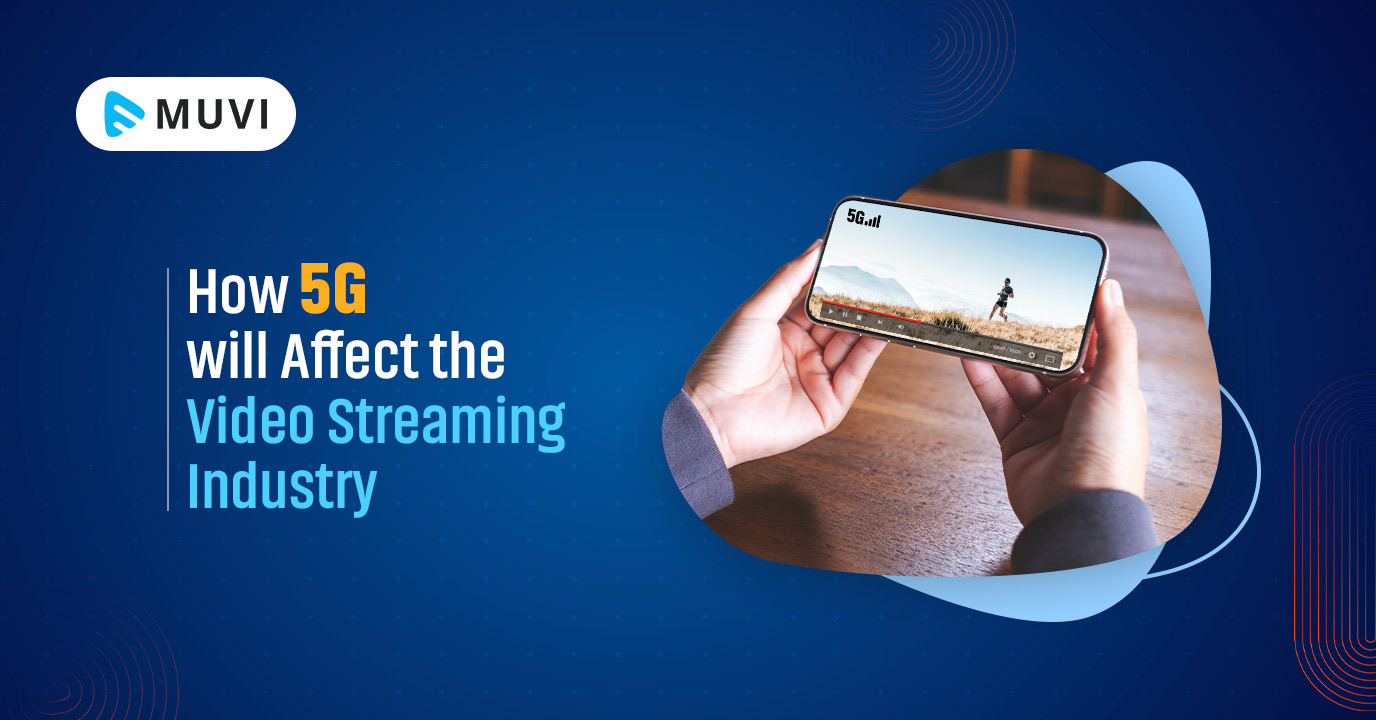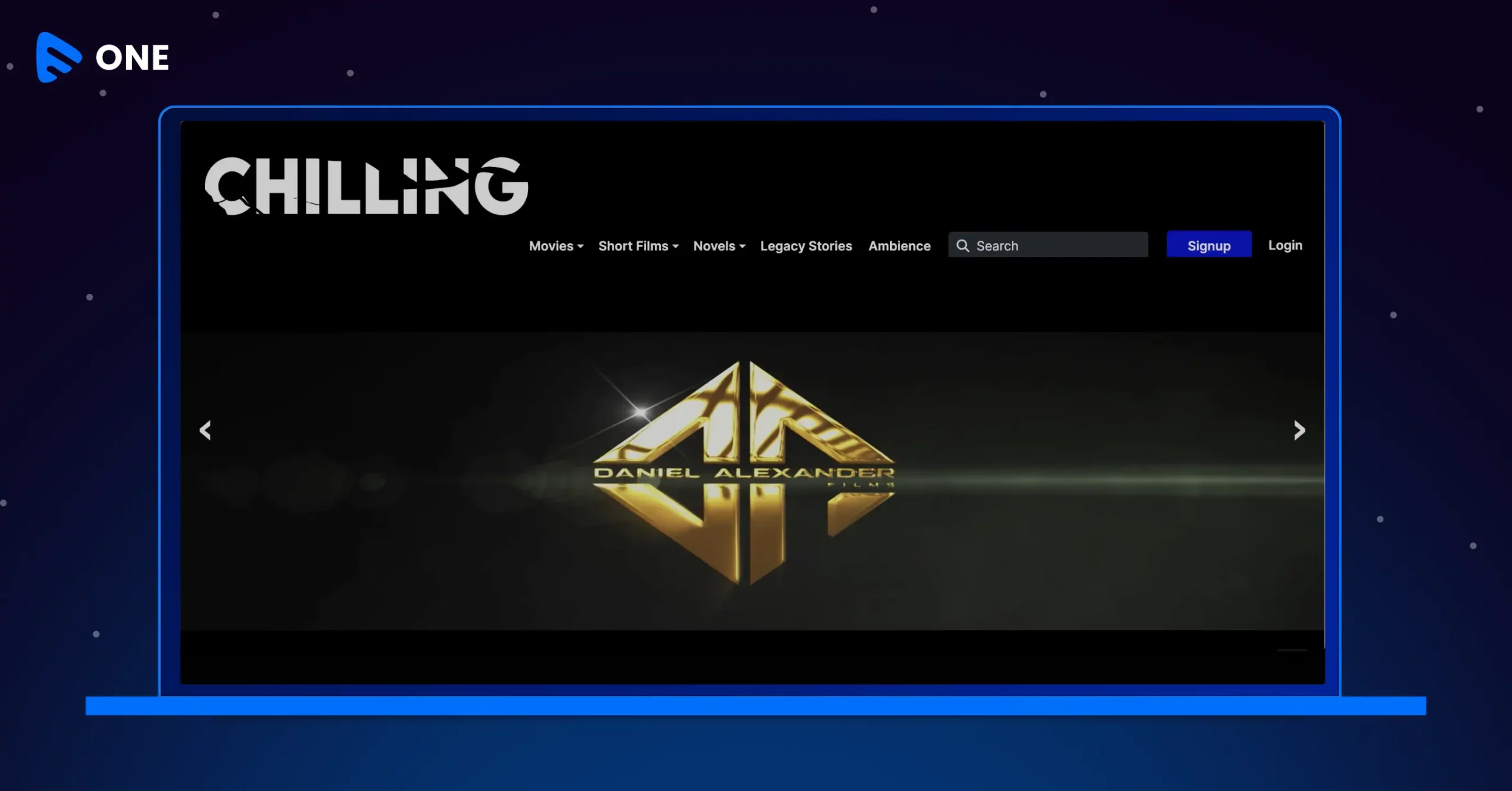As demands for buffer-free video streaming and high-quality content rise, the newly emerging 5G technology is set to drive the OTT viewer experience to a whole new level. As video is accountable for a majority of mobile internet bandwidth consumed today, the upgraded connectivity will open new doors for digital streaming providers.
With the 5G network’s revolutionary standards in low-latency and ultrafast download speeds, video-on-demand users will be able to bid a final goodbye to video buffering. In this blog, we will talk about 5G technology, its benefits and how 5G is poised to bring a major impact on the video streaming industry.
What is 5G?
A new global wireless standard after 1G, 2G, 3G, and 4G networks, 5G is the 5th generation mobile standard. 5G, the next generation of cellular technology, was designed to bring landline speeds to mobile devices and is designed to connect virtually everyone and everything together including machines, objects, and devices. Fundamentally, 5G is everything about more bandwidth resulting in faster upload and download speeds.
What’s the Buzz around 5G?
We live in an era defined by speed and change and newer technologies are created to make life much easier. 5G, with its incredible fast data connections, is projected to bring about that change and deliver real-time results. 5G at its peak has the potential for developing revolutionary applications outside a wired environment. Use cases range from AR, VR, remote healthcare, video streaming and so on. Beyond speed and latency, 5G standards will have a much higher connection density, allowing networks to handle immense numbers of connected devices.
In 2020, worldwide 5G wireless network infrastructure revenue will reach $4.2 billion according to Gartner.
“5G wireless network infrastructure revenue will nearly double between 2019 and 2020,” said Sylvain Fabre, senior research director at Gartner. “For 5G deployments in 2019, CSPs are using non-stand-alone technology. This enables them to introduce 5G services that run more quickly, as 5G New Radio (NR) equipment can be rolled out alongside existing 4G core network infrastructure.”
Benefits of 5G in Video Streaming
‘Faster’ and ‘better’ are synonymous with wireless connections but 5G, acclaimed to be the 5th generation global wireless standard, is poised to make revolutionary changes in the world of video streaming due to its incredibly advanced data network capacity. Here are some of the benefits that 5G can bring about:
- Decreased Latency – 5G is expected to send and receive information in one millisecond or less. When it comes to streaming, this means that digital objects will be able to replicate real-time interactions. The ultra-low latency could be a game-changer in enabling critical applications such as virtual reality, drone control, industrial automation, sensors, remote surgery and military applications
- Improved Cellular Coverage – 5G is poised to deliver a more reliable and consistent experience to users, both indoors and outdoors. Since existing frequencies are limited, 5G uses various aggregated bands to unlock bandwidths of over 1GHz. This makes streaming videos on our smartphones a much more enjoyable and fast experience, not just for one individual, but for anyone streaming a video at the same time.
- Extended Reach – 5G technology makes it possible to speed up delivery of any type of content anywhere with virtually no perceptible delay. Telecom carriers can expand their market to remote locations that were previously unreachable due to 5G and expand their connectivity levels even in remote areas that currently rely primarily on wireline communications.
- Richer Mobile Experience – Due to 5G’s capability to unlock bandwidths of over 1GHz, advanced streaming capabilities like AR, VR, interactivity, and artificial intelligence could be enabled in a mobile environment. Connectivity improvements will remove barriers to using streaming for various applications via mobile and connected devices.
Impact of 5G on Scalability of Video
A 5G environment synonymous with high speed and ubiquitous connectivity will ensure possibilities like a seamless live stream experience that doesn’t keep buffering, lags behind annoyingly, or pixelates into something reminiscent of the 8-bit gaming days. 5G unlocked bandwidths of over 1GHz giving a massive boost to both live streaming and VoD with its 10x decrease in end-to-end latency, 20X faster speed, and higher bandwidth. With 5G technology video streaming from mobile devices also becomes quicker, smoother, and powerfully immersive.
Video on mobile devices, for example, is most often delivered in standard-definition (SD) resolutions. However, when transmitting high resolution 4K images becomes necessary, in a context where there is massive concurrent consumption, the situation makes media delivery more challenging. Here’s where 5G superpowered by high-speed connectivity comes into play and covers the quality of experience requirements if you really want to succeed.
Talking about viewer experience, in situations where service providers underestimate the size of the audience, in relation to the network’s capacity, the quality of experience often suffers. A strong network architecture alone may not be enough to handle the fluctuating demand for live and VOD content delivered to multiple screens giving rise to low-grade video performance that can suffer in terms of latency, congestion, and packet loss. The roll-out of 5G networks can set the ball rolling especially in use cases that demand distribution of bandwidth-intensive and high-quality video to connected devices.
With regards to video scalability, 5G has the potential to offer about 10 times more bandwidth per base station. In addition to offering more bandwidth, 5G can accommodate a much denser network of base stations. In simple terms, this means you get more bandwidth in the hot spots, like sports stadiums and live concert venues.
5G Streaming Use Cases
iOT and Smart Ecosystems– 5G is set to spur innovation across various industries and devices to facilitate the connection of everything requiring a low latency internet connection, starting from home devices and appliances to self-driving vehicles, traffic lights, sensors and drones paving the way for an environment in which every device is “smart” and connected.
With 5G, one can practically do anything. Just imagine a future built on this technology. One can imagine anything from streaming movies on Netflix from their self-driving cars to relying on a dashcam with object detection capabilities to navigate the roads.
AR/VR- AR and VR are two technological concepts providing significant benefits in this new digital reality. And the adoption of 5G will transform the way we consume and interact with content, both from a consumer perspective and from an industrial perspective. While AR is commonly used on smartphones or tablets in amusement parks and museums to present additional content for exhibits, with 5G, the ability to use AR in live, outdoor environments away from stable wi-fi signals can influence the types of interactions and integrations that developers can build.
With 5G enabled VR, you could get a virtual tour of your home instead of waiting until you arrive at your destination by using a 360-degree headset that enables you to tour houses without visiting the actual location.
Virtual Healthcare- Remote healthcare capabilities are one of the most discussed use-cases of 5G technology along with autonomous vehicles. From remote patient monitoring to long-distance endoscopy training, remote healthcare powered by 5G can now bring medical expertise to rural populations. Healthcare service providers could also rely on wearable devices to continuously monitor, collect, report, and transmit vital information to a remote monitoring center. We can expect to see augmented reality (AR) and virtual reality (VR) powered surgeries, in the coming years.
Wrapping up,
5G offers massive network capacity, giving broadcasters the opportunity to provide more than 100Mbps bandwidth per user and serve more sessions at scale as far as video streaming is concerned. This situation is totally unimaginable in a 4G environment unless the cell is nearly unoccupied. 5G brings not only dramatically faster access network speed but also the network infrastructure to enable mobile edge cloud.
At Muvi, we believe that 5G will provide new opportunities for video and cable providers to grow their reach.
Muvi One can help your videos look amazing with 5G enabled HDR encoding to help you create the highest quality viewing experiences on every device or platform, be it mobile or the web.
Did you know that with Muvi, you can launch your very own OTT Video-on-demand website/app across 20+ platforms, without writing a single line of code?
Take a 14-Day Free trial to get better clarity!















Add your comment